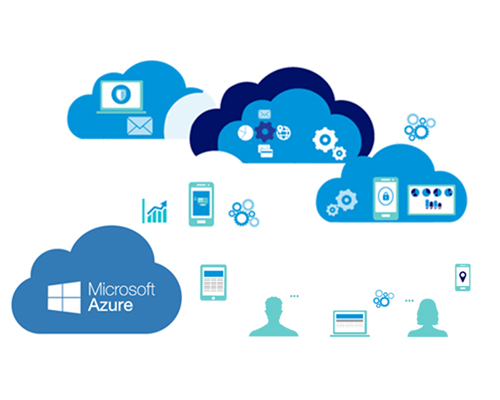Every organization which is linked with the manufacturing of data needs a proper and well-developed data architecture. A few years back, a new treasure trove of techniques and technologies was developed for the organizations. They can improve their way of serving and satisfying customers with better data architecture. Just like a regular conventional architect who is linked with the designing of homes, a data architect is linked with creating a blueprint of a data environment. It is aligned with all the short and long-term goals of an organization along with its cultural and contextual environments.
Data architecture may be defined as the standard set of products and tools which an organization uses to manage its data. Data architecture is used to define the processes of Extract, transform and deliver manageable data to business users. It is also used to identify the people who would be using the data and it also identifies the requirements by them. A good data architecture should focus on flowing from right to left that is from the data consumers to the data sources.
Some major building blocks of the modern data architecture are:-
Customer Centric
The modern data architecture should shift its focus from the data or the technology which was earlier required to extract, ingest and transform information. Moreover, start with business users, their requirements, and flowing backward as mentioned earlier. Customers may be related to the internal or the external environment of an organization depending upon the role, department, or time. An effective data architecture should be capable enough to continuously evolve with the new and dynamic customer needs.
Adaptability
In a modern-day data architecture, data should flow like water from the source systems to the customers’ users. The purpose of an effective data architecture should be to manage the flow of data by creating a series of interconnected and bidirectional data-flowing pipelines that would eventually serve business purposes. These data pipelines should be created with the proper use of data objects—data snapshots, data increments, data views, reference data, master data, and flat, subject-oriented tables.

Automation
As per Data Architecture consulting experts, In order to adapt to the dynamic business environment, a good data architecture should look forward to the automation of business processes. It must start from profiling and tagging data as it was ingested and then should be mapped to its existing data sets and attributes. It is done by a process known as metadata injection which is also a key function for data catalogs. In the same manner, it should be effective enough to detect the changes in the source of schema and identify the changes which would be happening on the downstream objects as well as the applications. In the real-time environment, it should also detect anomalies and send notifications or alerts to the individuals.
Smart
An effective modern-day data architecture should be updated enough to make the proper use of machine learning and Artificial Intelligence so that it can build proper data objects, models, tables, and views which would help to keep up the pace for the flow of data. It would make the use of intelligence in place of human labor so that it can identify data types, common keys and join paths, identify and fix data quality errors, map tables, identify relationships, recommend related data sets and analytics, and so on.
Flexibility
The modern data architecture must be flexible enough so as to support multiple business needs altogether. It should be capable enough to support multiple types of business users, load operations, refresh rates, query operations, deployments, data processing engines, and pipelines. A good data architecture should be like all things available for all types of people.
Collaborative

In the past, the It departments were held responsible for building everything. In the present era, the modern data architecture splits the responsibility of acquiring and transforming data between the IT department and the business units. IT department now works less but still has the heavy burden of ingesting the data from core operational systems. And also generating reusable generic data as building blocks. From this point, the business unit takes over and handles the responsibility of using the data preparation and data catalogs. It helps with the creation of custom data sets comprised of corporate and local data for the use of creating power business unit applications.
Simplicity
Simple data architecture is the best data architecture. It is a tall task given to the diversity of the requirements and complexity of the components in the modern data architecture. For the application of this building block, the use of tools with an inbuilt data management environment rather than a massively parallel processing appliance or the Hadoop system. For reducing the excess complexity, organizations should look forward to limiting the data movement and data application. Moreover, advocate for uniformity in the data database, platform, data assembly framework, and analytic performance.
Security

The modern data architecture should be built in such a way that it provides access only to authorized users. They are ready to access the data and keep hackers or unauthorized people away from the data. It should also comply with the privacy regulations, including Health Insurance Portability and Accountability Act (HIPPA) and the General Data Protection Regulation emanating from the European Union. The modern-day data architecture should do this by ingesting, masking personally identifiable information (PII). And also, tracking all data elements in a data catalog, including their lineage, usage, and audit trail. Lifecycle management is also an option that is deemed to ensure that each data object is secured with an owner, location, and an obsolescence plan.
The building blocks of the modern data architecture are made keeping in mind the time when organizations used to be satisfied by building fairly static IT-driven data. The building blocks aim at improving the data architecture of an organization in simple yet effective ways to help them by not only being dependent on the IT-driven data.
Fill In The Form For – FREE 30 Mins Consulting For Data Architecture










